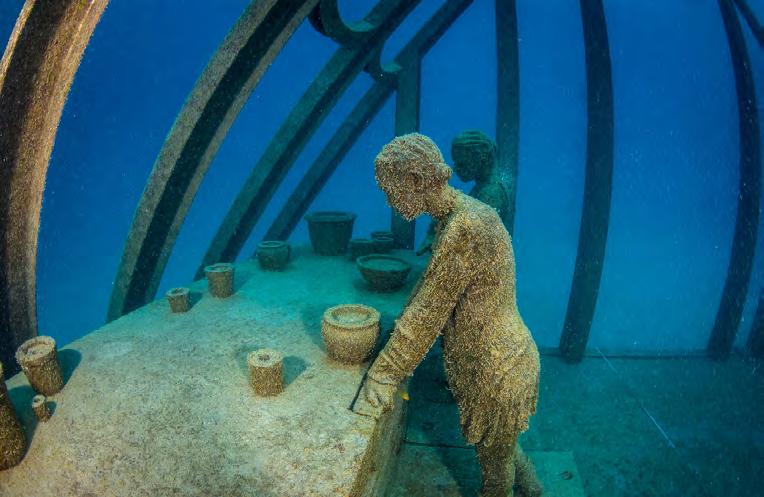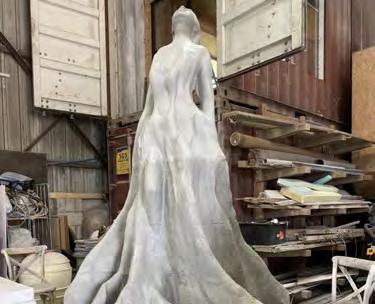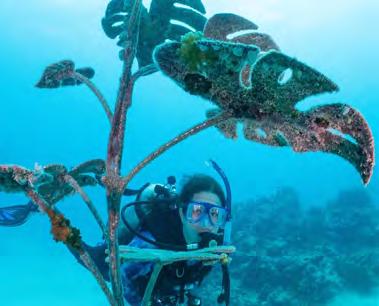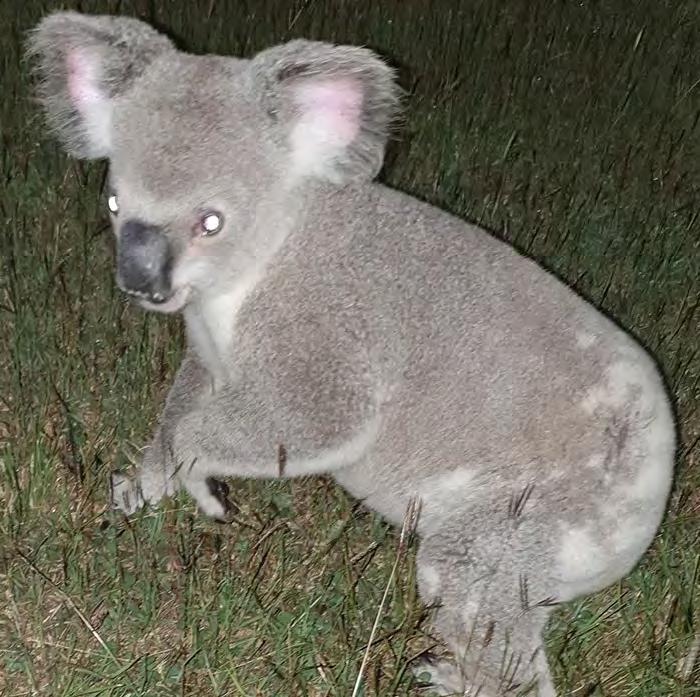
6 minute read
ENVIRONMENT
Museum of Underwater Art announces new museum plans for Magnetic Island
The MOUA plans to create a new underwater museum on Magnetic Island, designed to bring tourists to the area and honour the reef’s scientific and cultural heritage. But local environmental groups are protesting the decision.
Advertisement


Marina Trajkovich
THE Museum of Underwater Art has announced new plans to build an underwater museum on Magnetic Island, part of the organisation’s reef conservation projects designed to boost tourism and promote new coral growth on the Great Barrier Reef.
But proposals to create the new installation in Geoffery Bay, one of the island’s oldest reefs and protected Green Zones, have environmental groups concerned, sparking protest from the island’s locals.
Chair of MOUA, Paul Victory, says that the new underwater ‘Reef Scientist Trail,’ proposed for Magnetic Island, is one of the new ways the not-for-profit organisation plans to engage the public with reef conservation efforts, by inviting them to join the underwater museum experience.
“We were looking for a project that would bring together the region’s significant coral reef science story with traditional custodianship through an educational tourism experience,” said Mr Victory.
“The trail is forecast to recognise eight leading scientist stories who have made a difference to the Great Barrier Reef, starting with the traditional owner’s story.”
The Magnetic Island museum, currently undergoing the permit approval process required by the Great Barrier Reef Marine Park Authority, expands on the organisation’s existing projects, like the Coral Greenhouse on the John Brewer Reef.
Victory says that sculptures for the island are already underway, with lead artist and designer Jason De Caires Taylor already working on pieces that will honour the contribution of leading reef scientists and activists.
Among scientists rendered in sculptural form is Professor Peter Harrison, a globally recognised coral researcher and ecologist, whose forty-year career studying coral spawning, and marine restoration has been influential to conservation efforts.
Molly Steer, who at 11 years old was recognised as 2018’s Young Woman of the Year, for her Straw No More Project, which works to educate the public on the impact of plastic straws on our oceans has also been immortalised in sculpture.
Victory added that in addition to being a touristic and economic draw for Townsville and Magnetic Island, and a new cultural experience for North Queensland, the underwater museums serve an active part in coral rehabilitation processes.
“Experience in other locations around the world is that the sites actually assist restoration, become aggregators of fish species and coral reproduction,” said Mr Victory.
“The artworks are specifically designed to provide habitat opportunity. We have been monitoring this at John Brewer and can see that already occurring,” he said.
The museum will be accessible to visiting snorkelers, with the latest Public Information Package released by MOUA revealing interest in Geoffery Bay and Picnic Bay as well as Horseshoe and Nelly Bay as potential site locations.
But representatives from the Magnetic Island Nature Care Association say that the new museum and specifically the proposed site of Geoffery Bay, a protected marine Green Zone, would put undue pressure on the ecosystem and marine life.
The organisation launched an online awareness campaign, urging people to contact the Great Barrier Reef Marine Park Authority in protest of the new museum as part of the latest public consultation and approval process.
“We don’t think the Museum of Underwater Art does anything for reef conservation which is our major interest,” said Gethin Morgan, the president of the Magnetic Island Nature Care Association.
“To put in sculptures as tourist attractions in their own right, we think is completely against the conservation values of the Green Zone.”
He says that the new manmade structures would be in violation of Geoffery Bay’s marine protections, and that the bay is a beautiful tourist attraction in its own right, known amongst island locals for its diverse and thriving marine life.
“Attracting more people there will upset the use of the areas, particularly the larger species that frequent the area.
“The big rays, sharks, turtles don’t like a lot of people and will tend to duck for cover.
“The museum will interfere with the use of the area for the species it’s meant to be there for.”
A location for the new museum is yet to be determined, with discussions and permit applications still under analysis by the Great Barrier Reef Marine Park Authority.
“We are cognisant of the concerns about Geoffrey Bay and are working with stakeholders on this as part of the approval process,” said Mr Victory.

MOUA’s Coral Green house on John Brewer Reef, where 130 new corals are due to be planted, supporting reef rehabilitation projects
Magnetic Island is the next location for a MOUA museum, with a site unconfirmed and currently in the proposal stage
The existing Coral Greenhouse at John Brewer Reef, outside the Townsville and Burdekin region

One of Museum of Underwater Art’s (MOUA) sculptures along the Marine Science trail will be modelled off Jayme Marshall of the Wulgurukaba and Yunbenun Peoples of Magnetic Island.
Koala makes rare cameo in surprise sighting
Daniel Shirkie
NOT many people know what happens in their neighbourhood under cover of darkness, especially when it concerns koalas.
Alligator Creek resident Jaymie Rains, a keen runner, was astonished to find this little girl at the end of her driveway.
Jaymie said she had lived in Alligator Creek for 29 years, and this was the first koala she had seen there.
“It wasn’t overly alarmed by the presence of a human, or even a human snapping pics with a phone,” she said.
The cuddly visitor stayed still long enough to pose for a few pictures before deciding a nearby gum tree was a better option.
NQ koala expert and Magnetic Island Koala Hospital Veterinarian Dr Ali Bee said although they weren’t often spotted, koalas were not out of the ordinary in many areas around Townsville, quite apart from the colonies on Magnetic Island.
“They’re about on the fringes of the city in Wulguru and Stuart and further out, and they’re also around Charters Towers, Collinsville and Bowen,” she said.
“It’s the mating season from now until about February, so they’re on the move and looking for a mate, particularly the males.”
Dr Bee said the males’ night call, particularly, could be heard quite clearly during mating season.
She said they were likely to be nearby if there were enough food trees in the area. Koalas feed on Ironbark (Eucalyptus crebra), River Red Gum (Eucalyptus camaldulensis), and Blue Gum (Eucalyptus tereticornis).
“Look for scratch marks on the tree trunks,” Dr Bee said.
“Their claws are very powerful, and they make a sort of downward slash as they climb.”
CONNECT NOW:
The Magnetic Island Koala Hospital relies solely on public donations to survive. Donations can be made through PayPal at PayPal.Me/ magislkoalahospital.








